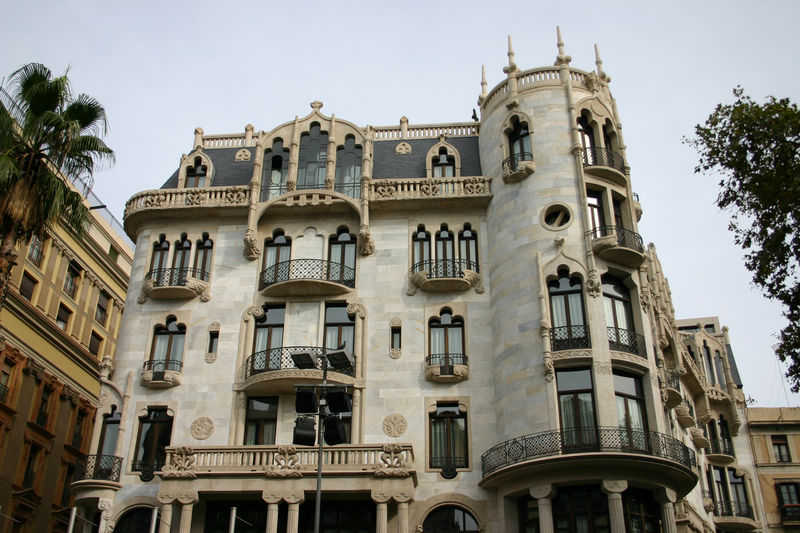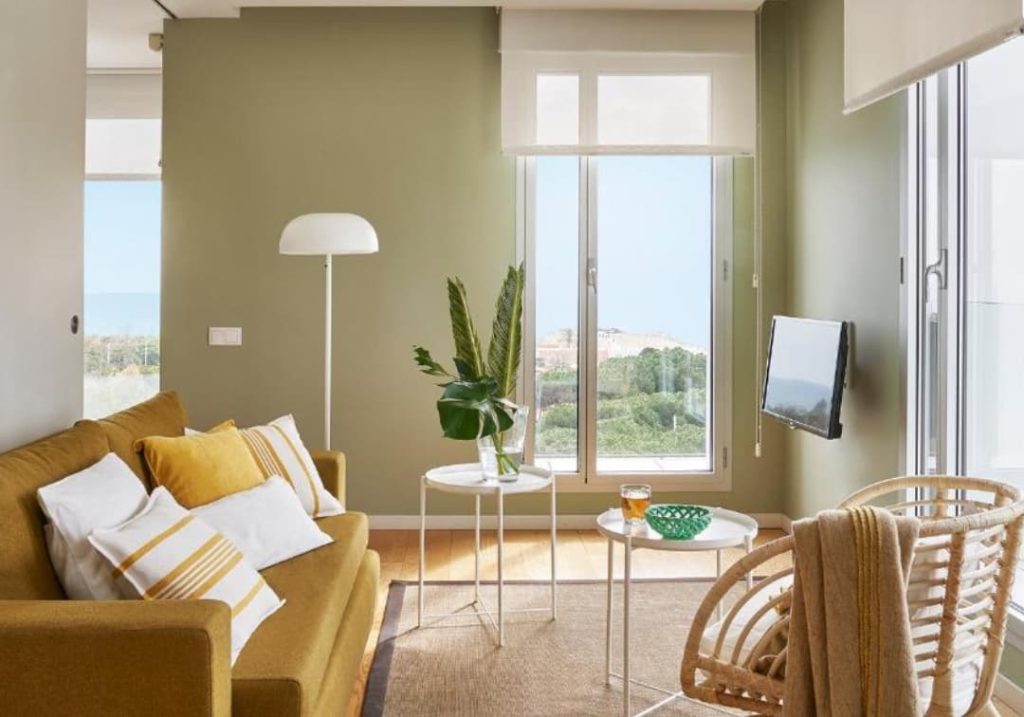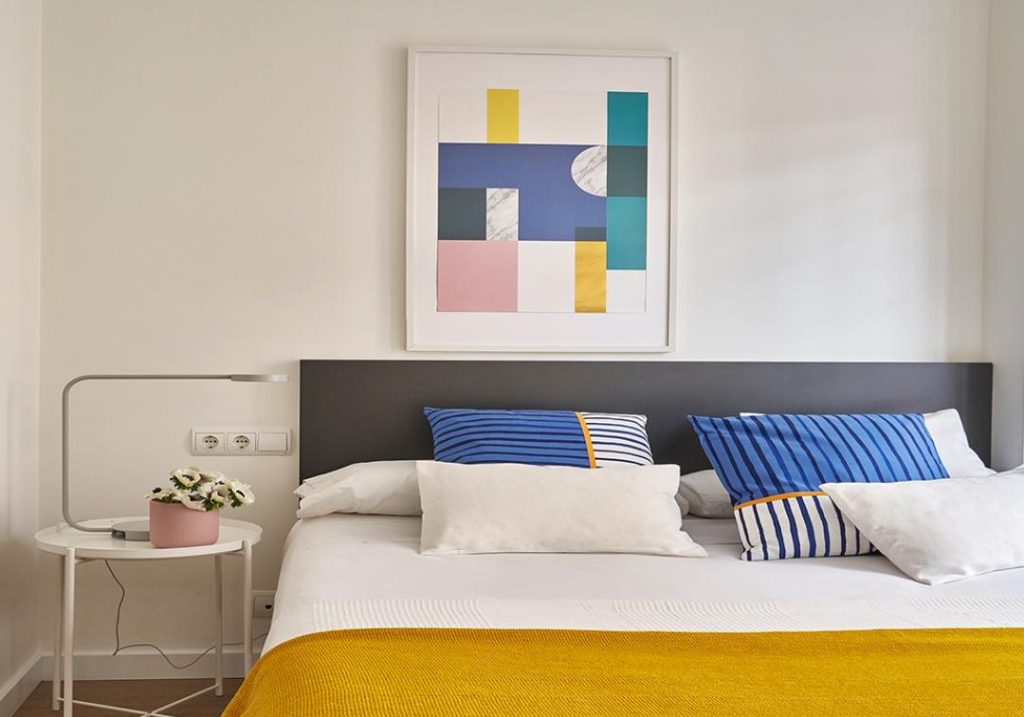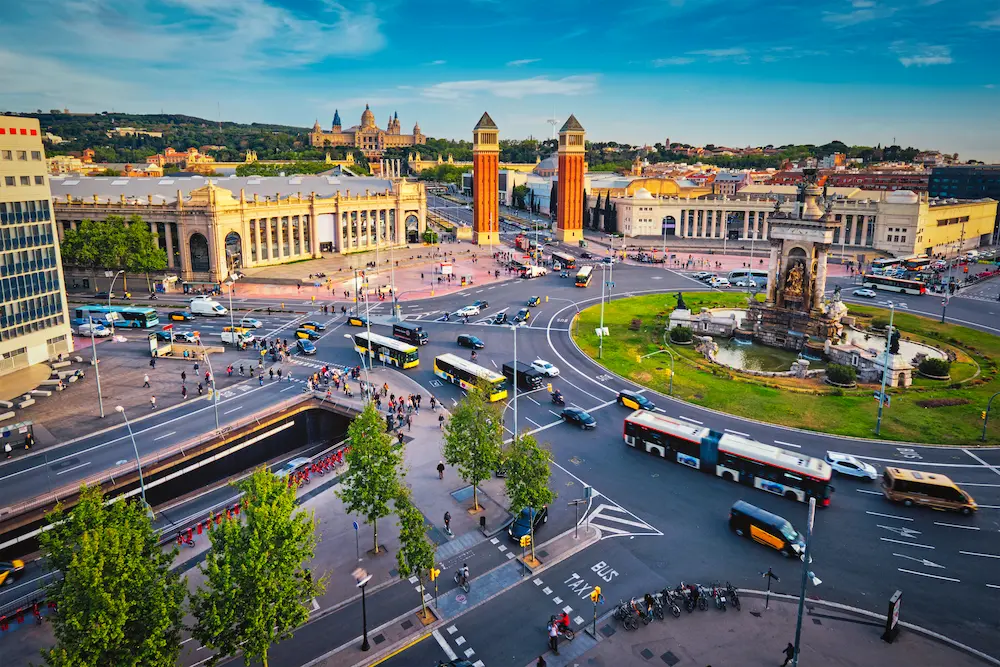When we talk about Horta, Barcelona, there may be doubt as to which territory we are referring to and, to answer this question, we need to go back in history. Once you know how this territory has evolved, it will become easier to know what to do in Horta, Barcelona. Today we want to refer to the district of Horta, which receives the full name of Horta-Guinardó, instead of only closing it to the homonymous neighborhood, since it is one of the least known districts of Barcelona, but one of those that hides more surprising corners. Keep reading to know this area of Barcelona in depth!
A SLICE OF HORTA’S HISTORY
The references to Horta go back to 965, at which time the old rural nucleus was raised between Collserola and the mountains that delimited it: la Rovira, el Carmel and la Creueta del Coll. Once the Bourbon troops entered Barcelona and the Nueva Planta decrees was established, Felipe V ordered that Horta be submitted to Sant Genís dels Agudells. However, the village of Horta continued to grow with the districts of Vallcarca and el Penitents. Once annexed the municipality to Barcelona in 1903, the current district also included the neighborhoods of the Clota and the Coll. It was in 1984 when la Font d’en Fargues, el Baix Guinardó, Can Baró and Guinardó were added to the district, changing the name of the district to Horta-Guinardó, made up of a total of 11 neighborhoods.
LABERINT D’HORTA
Without a doubt, the Horta labyrinth is the most visited site in the district. The neoclassical gardens of the palace of the Marquès d’Alfarràs, dated in 1794, were in the nineteenth century a meeting point between the bourgeois society of Barcelona, so it is not surprising that they have this imperial aspect. The park is the oldest in the city and besides the labyrinth and gardens, it also houses the neo-Arab style Palau Desvalls. Throughout the garden you will find many references of Greek mythology, from statues, temples and even grottoes created in honor of each mythological character. In the western part, we find a romantic style garden, which also has some orientalist elements.
Timetable: From 10:00 AM to 7:00 PM in winter and from 10:00 AM to 8:00 PM in summer. Open every day.
How to get there: Germans Desvalls Street, opposite the Mundet metro station.
JARDINS OF THE PALAU DE LES HEURES
Are you wondering what to do in Horta near the labyrinth? These gardens are an excellent option. The palace built during the last decade of the 19th century in the style of the French chateaux, known as Casa Gallart, was commissioned by an Indian who had found his fortune in Puerto Rico. The Renaissance Italian-style garden that surrounds the estate is characterized by its large palm trees and the collection of flowers that reach their maximum splendor in spring. Its structure on three terraces gives it great scenic value and is considered one of the most beautiful parks in Barcelona.
Timetable: 171 Passeig Vall d’Hebron, 171.
Address: From 10:00 AM to 6:00 PM from November to March and from 10:00 am to 8:00 pm from April to October.
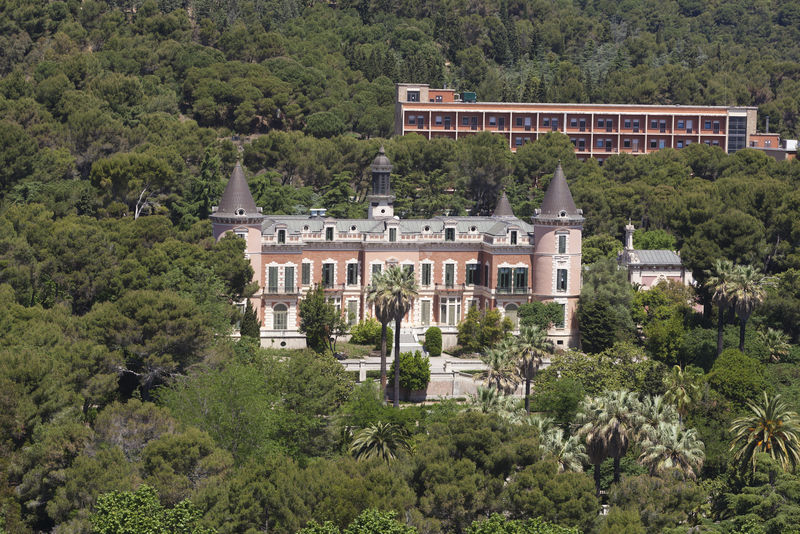
AIGUAFREDA STREET
Horta has been characterized for years for its water business. The fact that many houses had direct access to a well would allow many women to start selling their service as laundresses to the elites of Barcelona. Thus, Aiguafreda Street is one of the few testimonies that remain of this lifestyle that began in the seventeenth century and remained until the twentieth. Today the 8 low houses of this street are still standing, creating a small tunnel in time that their neighbors have conserved with great care and dedication.
How to get there: Aiguafreda Street is quite hidden, so the best way to get there is to get off at the Horta metro station and get off the la Baixada de Sant Mateu, and take the third street on the right.
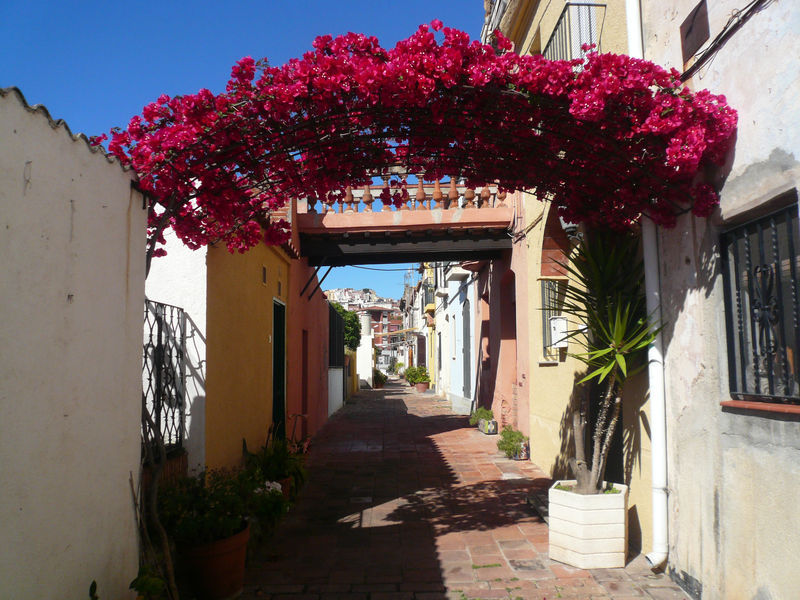
TURÓ DE LA ROVIRA
In the Carmel neighborhood we find one of the best views of Barcelona, located on this hill. Although it is known that there was an Iberian settlement in this place, it was the Spanish Civil War that left what is now the remains that can be seen in the Turó de la Rovira. It is an anti-aircraft battery that was part of the defense of the city against the Francoist troops. Once the war was over, this same space was used by the growing immigration that came to the city to build their own shanties, creating the enclave of ‘Cañones’, which lasted until the 90s. The museum on this hill reviews the function of the mound in the city, although most visitors go up to this point to enjoy a perfect sunset with Barcelona in the background.
Museum opening hours: From 10:00 AM to 2:00 PM on Wednesdays and 10:00 AM to 3:00 PM on Saturdays and Sundays.
How to get there: carrer de Marià Labèrnia. There is no public transport near the Carmel bunkers, so the best way to get there is with buses 92 and 119.
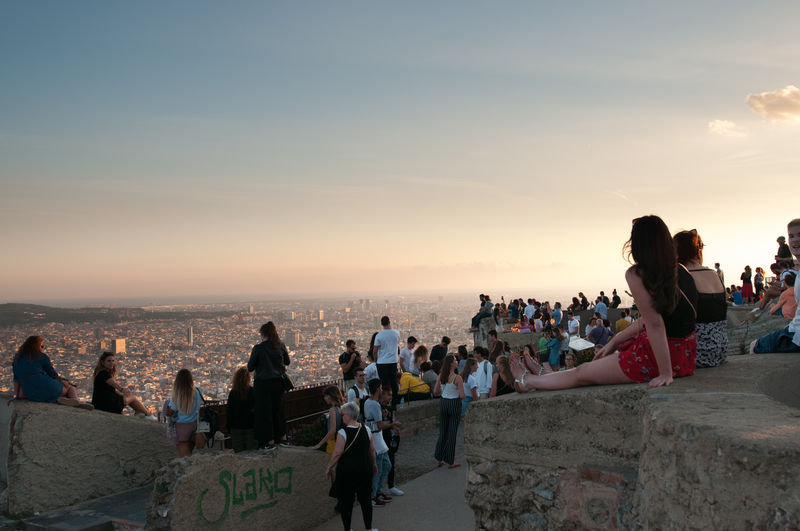
FONT D’EN FARGUES
This neighborhood that was previously part of the Sant Andreu del Palomar neighborhood originated around the Masia de Can Fargues, built in the 14th century around a Romanesque defense tower from the 11th century. It was the Fargues family who, at the end of the 19th century, paid for the construction of the grotto and fountain that gave the neighborhood its name, along with a modernist kiosk, where feasts and picnics where held.
Address: 383-389 Passeig de Maragall.
How to get there: on buses 19, 29 or 45.
PLAÇA DE BACARDÍ AND PLAÇA D’EIVISSA
The main meeting points for young and old in Horta are these two squares where you will find some of the most popular terraces, perfect if you do not know what to do in Horta. In Plaça de Bacardí or Bacardí Square, named after the landowner who built this area of the neighborhood in the twilight of the nineteenth century. Today, this square still retains its village air and is the perfect place to stop for a drink in La Bacardina or the Gastrobar Duplex. On the other hand, the Eivissa Square is another center of activity in Horta since it was the historic location of the neighborhood market. El Quimet d’Horta, opened in 1927, is one of the flagship bars of the square, where you can taste one of the best sandwiches in Barcelona.
How to get there: from our holiday apartments in Barcelona, you can get to both places by traveling to the Horta or Vilapicina metro stop.
CARRER CAMPOAMOR
Formerly called Rambla de Cortada, this street was urbanized at the end of the 19th century as a summer home for the city’s high bourgeoisie. It is for this reason that today we can still see some magnificent modernist buildings such as Can Sala or the José Garreta tower. In addition, here you will find a fountain and water tower, which came from the Can Cortada mine and supplied the area. In addition, the actual Can Cortada is also of great interest, since it is a farmhouse built in the eleventh century, so it may be one of the less-known medieval buildings of Barcelona.
SANT PAU, MODERNIST SITE
If you are visiting Barcelona to find modernist architecture, this site is essential. Designed by the Catalan architect Lluís Domènech i Montaner, this modernist complex was created as a hospital that had to occupy the surface equivalent to nine islands of the Eixample. Although it never reached this magnitude, this hospital is a UNESCO World Heritage Site thanks to this interpretation of modernism with neo-Gothic airs. Located in the neighborhood of Baix Guinardó, it is one of the most important works of the Catalan modernist movement so, if you do not know what to do in Horta, sign up for this visit on your district tour.
Timetable: from 9:30 AM to 4:30 PM from Monday to Saturday and from 9:30 AM to 2:30 PM on Sundays.
Address: 167 Sant Antoni Maria Claret Street.
PAVELLÓ DE LA REPÚBLICA
Created by Josep Lluís Sert and Luis Lacasa on the occasion of the Universal Exhibition of Paris in 1937, it was conceived as an empty three-story container, where large-scale works were exhibited, such as some by Joan Miró or even Pablo Picasso’s Gernika, with the aim of exhibiting public opinion about the Spanish Civil war. After being dismantled, the city council of Barcelona entrusted its reconstruction in the district of La Clota and is currently one of the most important archives on the Second Republic, the Civil War and the Franco dictatorship. In addition to admiring the rationalist architecture, you will also find a reproduction of the Gernika mural in the place where it was originally exhibited.
Timetable: 08:00 AM to 08:00 PM from Monday to Friday.
How to get there: 34 Cardenal Vidal i Barraquer Avenue.
CASA DE LES ALTURES
To finish this list on what to do in Horta, we return to Baix Guinardó to talk about another unique creation. It is a Neomudéjar-style building that was built at the end of the 19th century as the home of the General Manager of Aigües de Barcelona. Its name comes from the fact that the building stood next to the park’s water elevation deposits.
Timetable: 09:00 AM to 07:00 PM from Monday to Friday.
Address: 49 Ronda del Guinardó.
Now that you know what to do in Horta, we invite you to explain the route you followed and the sites you recommend.
